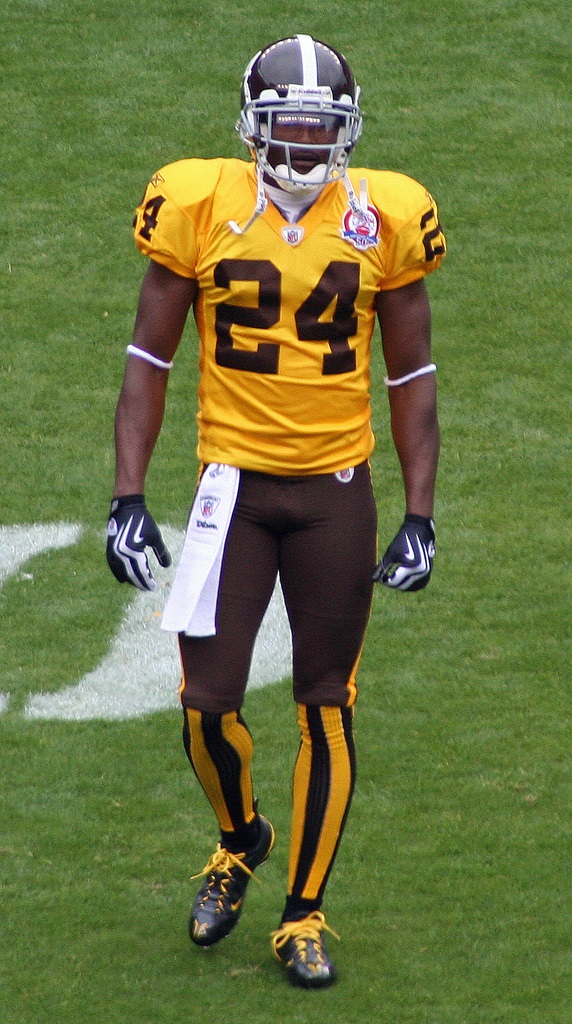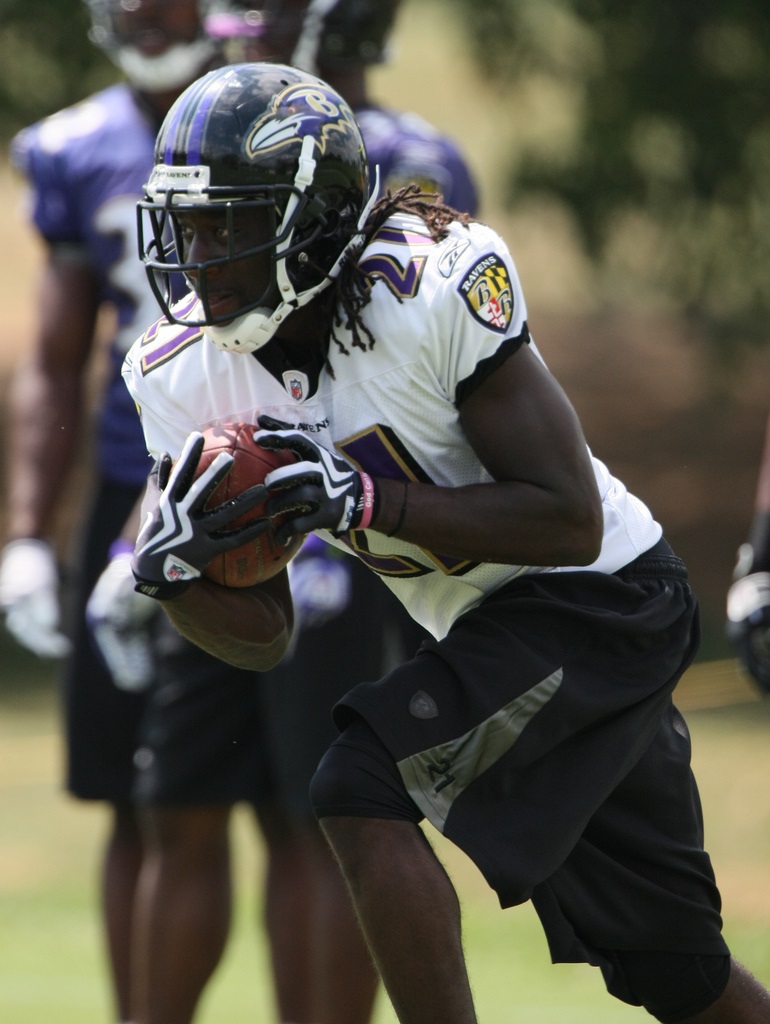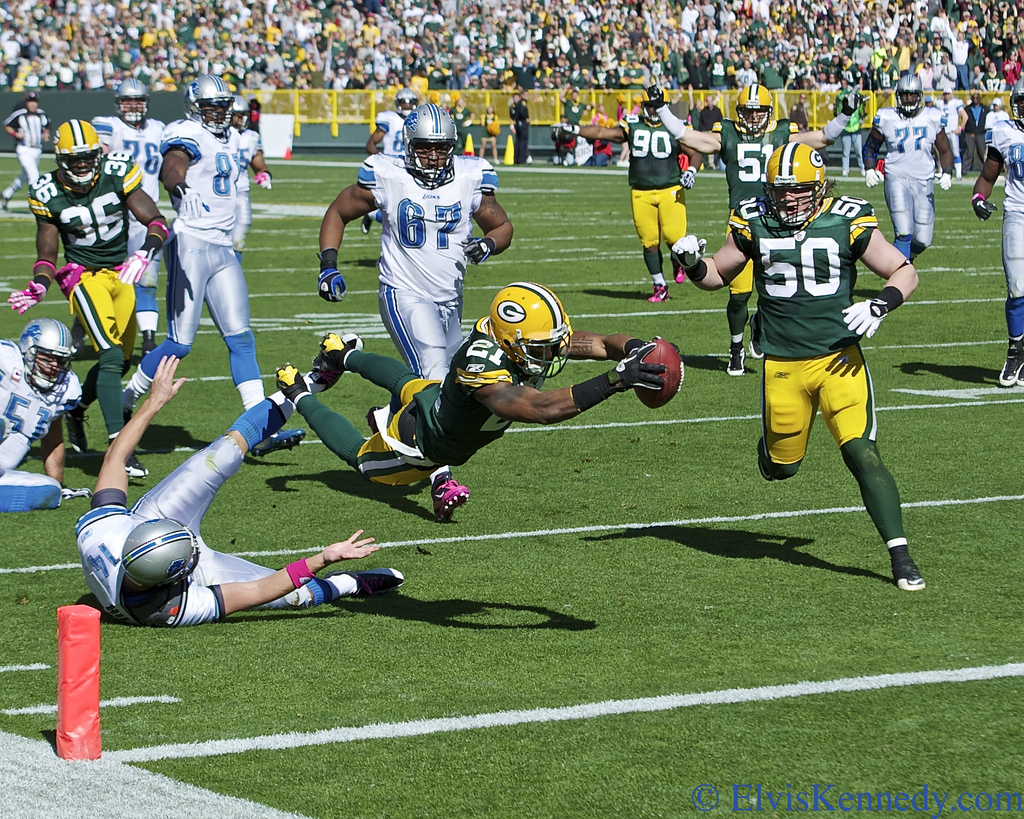
Champ Bailey and Reggie Wayne weren’t mirror images 12 years ago, but Fahey explains how age was the defining – and refining – factor. With a combined quarter century of NFL excellence, why not?
By Cian Fahey, Pre Snap Reads
Editor’s Note: A game I’ve been playing in my head in recent months is to take an offensive player and find his mirror image on the opposite side of the line of scrimmage. For example, Joey Galloway and Darrell Green were stylistically mirror images of each other. Both had amazing speed that sometimes overshadowed their underrated displays of craft at their respective positions over the course of lengthy and productive careers. Now I’m putting it on the blog and having some of my friends play.
Recently, on twitter(does this count as breaking the fourth wall?) I asked a simple question:
“If I reverted Peyton Manning and Tom Brady back to being 23 years of age with full health, in what order would you draft Andrew Luck, Robert Griffin III, Russell Wilson, Manning and Brady?”
The overwhelming majority of responses had either Manning or Brady at the top of the list. It may seem like a stupid question, but why wouldn’t anyone take the rookie stars from last season? Maybe my subsection of the twitter universe is the rare cautious kind who are scared of brash statements or questioning the unknown. That’s unlikely considering the unique quirks of the oddball bringing them together.
Presuming that my poll has an accurate reflection on the majority’s thinking, the answer is simple. Peyton Manning and Tom Brady have proven themselves for over a decade in the league. Year in and year out help their teams win football games. It may seem ridiculous, but that aspect is completely overlooked in today’s NFL. Longevity is the most underused word in NFL analysis and the most undervalued consideration for any kind of player ratings or rankings.
When is the last time you heard someone refer to longevity as a positive for a player? If it was recently, how often do you hear it? Unless you’re encountering a rare soul like Alen Dumonijic who is always considering the whole package, the likelihood is whoever you talk to will be caught up in the moment. That’s not necessarily a bad thing, because the moment right now is pretty amazing.
You’ve got quarterbacks rewriting the book on rookie expectations in the NFL. J.J. Watt, Von Miller and Richard Sherman are altering the perception of defensive players in different ways. There’s no need to question those performances; sit back and enjoy the rare opportunities we have to watch them. We don’t need to question those performances to appreciate the quality of those who have been doing it for much longer periods however. Players who are still doing it despite being some distance past their primes.
Manning an Brady are probably the poster boys for longevity in the NFL. While it’s a great achievement that both have played the game for so long, the positions they play have somewhat allowed them to last as long as they have. It’s also boring and talked to death. Instead, let’s try to appreciate two players playing positions that generally belong to the youth of the league.
Reggie Wayne and Champ Bailey are a combined 69 years on this planet, with a combined 26 seasons of professional football under their belts. At 34 and 35 years of age, they’re supposed to already be filling out the edges of the depth chart and providing guidance to the youth taking on the starting roles. Considering that today’s league is littered with spread offenses and athletic receivers that can either run past you or jink around you, you’re not supposed to be able to succeed without significant speed.
Of course, every casual fan of the game thinks that Champ Bailey isn’t able to succeed without his speed because of that playoff game against the Baltimore Ravens. That’s not exactly true. Bailey had an outstanding season last year. He doesn’t have the same athleticism that he once had, but he still has enough to flourish in the right situations. Press coverage against one of the fastest receivers in the league with no safety help is not the right situation.
He may not be a shutdown cornerback anymore, but he isn’t that far off. He can still move all over the field, has the speed to run with most receivers, the quickness to get ahead of almost any and the intelligence to still get the most out of his ball-skills.


Wayne on the other hand has embraced his role as a possession receiver during the Andrew Luck-era in Indianapolis. He was never solely a burner, but Wayne was much more of an all-around receiver during his prime, whereas last season he played the Hines Ward role in Bruce Arians’ offense. Within that role, Wayne was able to take advantage of defensive backs with his refined route running and accurate understanding of coverages to consistently come free. Of course, even though his speed had faded, his hands were only getting softer as the seasons went on.
Having those aspects of his game still in tact allowed him to succeed still, but much like Bailey, where he fit was also vital. With T.Y. Hilton, LaVon Brazill and Donnie Avery last year, Wayne was surrounded by more than enough speed to pull the top off the defense, while Hilton and Brazill are joined by Darrius Heyward-Bey in those roles for this upcoming season.
Longevity isn’t a reflection of talent. It’s a reflection of ability. The ability to evolve, adapt, and excel, despite facing the different obstacles that emerge throughout the span of a football career. So even while Wayne and Bailey’s physical traits continue to diminish, it’s their football abilities that have allowed them to extend their longevity to Favreian heights.
At some point, both players will be retired. When that happens, you can be pretty certain that both will be in the Hall of Fame. That’s not because they had a record-breaking season or two, or because they starred as rookies. It’s because for over a decade, they were superstars.








